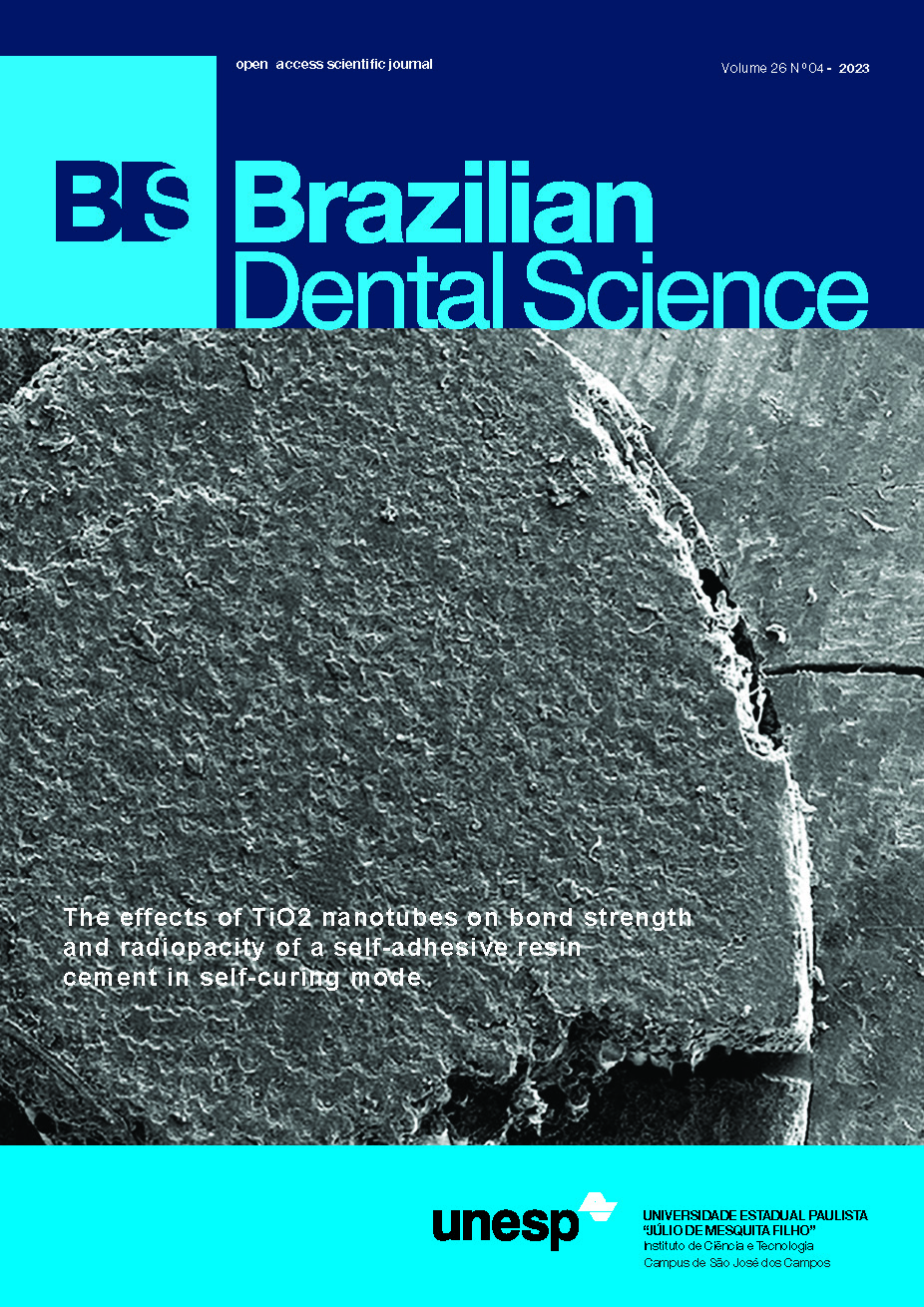Analyzing SHORE A hardness to assess the durability of soft denture lining materials
DOI:
https://doi.org/10.4322/bds.2023.e3986Resumo
Objective: Evaluate the “SHORE A” hardness in four denture soft lining materials at different time intervals. Material and Methods: Forty disc-shaped specimens, with dimensions of 15 mm × 3 mm, were distributed into four groups according to the materials: SC (Soft Confort); TS (Trusoft); UG (Ufi Gel P) and DS (Dentusoft) (n=10). The hardness measurements were performed using a portable digital hardness meter at 1 hour (h), 3 days (d), 7 d, 15 d, 30 and 60 d after preparation of specimens. The data were subjected to statistical analysis. Results: UG presented the highest hardness (39,09±2,27), followed by SC (34,36±8,52), DS (26,23±5,26) and finally TS (18,05±3,60), being that UG and TS had the smaller change in hardness between time intervals. The Repeated Measures ANOVA and Tukey’s test showed that the variables (material and time) and their interaction had differences statistically significant (p</-0.05). Conclusion: The study reveals significant variations in hardness among different groups. The groups SC and DS experienced substantial changes in hardness from initial to final values, with the group SC exhibiting the most pronounced shift. These findings underscore the suitability of acrylic materials for temporary applications. On the other hand, the silicone material (UG) with the highest initial hardness, exhibited relatively minor changes in hardness, emphasizing their recommendation for longlasting applications. Group TS, despite not being composed of silicone, also showed relatively minor changes in hardness, suggesting its potential suitability for specific applications where stability is desirable.
KEYWORDS
Denture liners; Dental prosthesis; Dental tissue conditioning; Hardness tests; Longevity.
Downloads
Downloads
Publicado
Como Citar
Edição
Seção
Licença
TRANSFERÊNCIA DE DIREITOS AUTORAIS E DECLARAÇÃO DE RESPONSABILIDADE
Toda a propriedade de direitos autorais do artigo "____________________________________________________________________" é transferido do autor(es) para a CIÊNCIA ODONTOLÓGICA BRASILEIRA, no caso do trabalho ser publicado. O artigo não foi publicado em outro lugar e não foi submetido simultaneamente para publicação em outra revista.
Vimos por meio deste, atestar que trabalho é original e não apresenta dados manipulados, fraude ou plágio. Fizemos contribuição científica significativa para o estudo e estamos cientes dos dados apresentados e de acordo com a versão final do artigo. Assumimos total responsabilidade pelos aspectos éticos do estudo.
Este texto deve ser impresso e assinado por todos os autores. A versão digitalizada deverá ser apresentada como arquivo suplementar durante o processo de submissão.




























